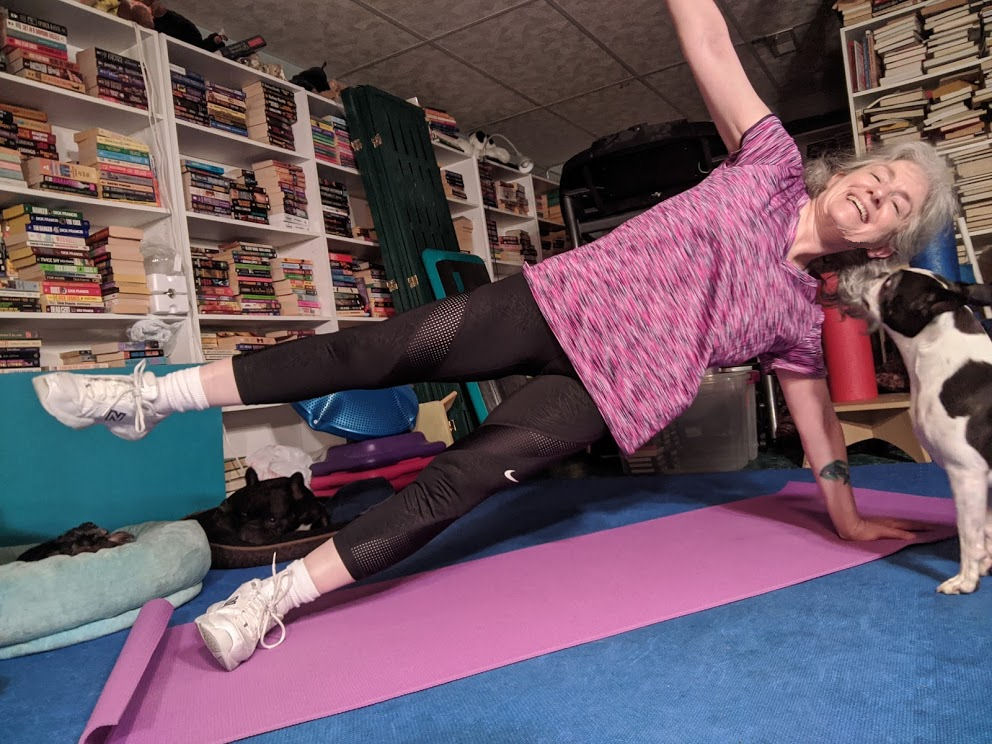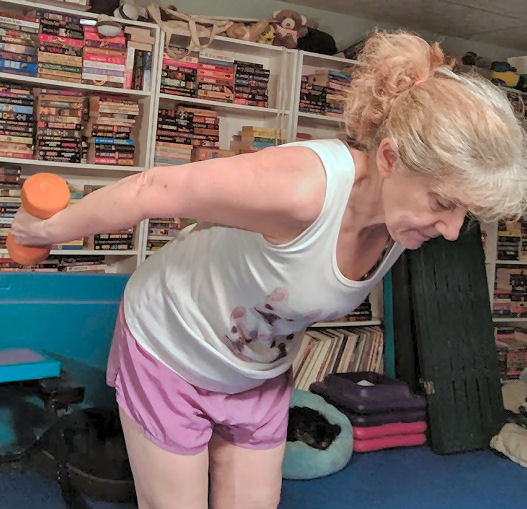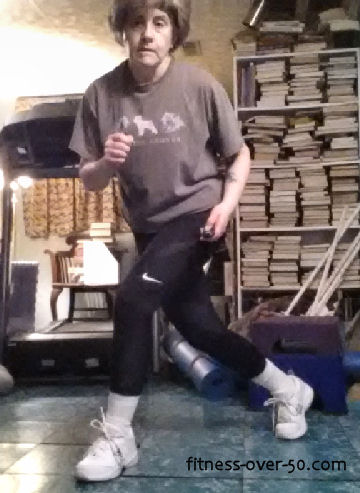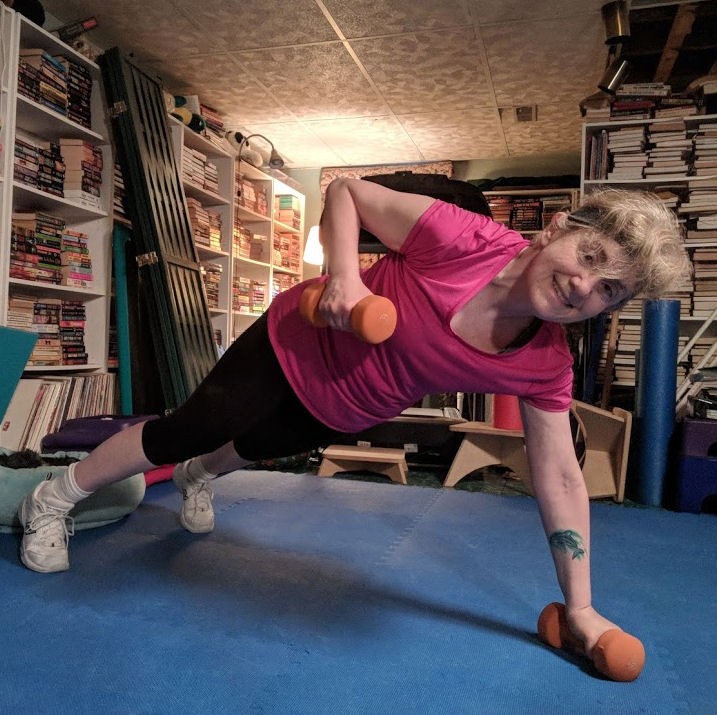We all strive for healthy aging, and that includes a healthy back. But so many of us are plagued with back pain as we get older. At the grocery store I see people who I think are about my age hunched over their cart and taking very slow steps, possibly because they’re in so much pain. And I see heartbreaking posts from friends on social media who are forced to cancel fun plans because of their back pain. For me, back pain comes and goes – and fortunately it’s mostly gone these days. So, how can we be active without back pain?
Bend the right way
We all know to not use our backs when we lift heavy objects. Bend your knees, squat and pick it up. Use the strength in your thighs, not your back. Keep your back straight when you lift. And when something is absolutely too heavy to lift, ask for help. I know that’s hard…
Suck it in!

I’ve been saying to tighten your core quite a bit these days. But, it’s the safest way to carry something. And when you’re straightening up from a squat or a crouch, suck it in. It really helps. Having a strong core leads to a strong back! I’ve been making an effort to focus more on my core for the last couple of years and have (knock on wood!) experienced hardly any back pain lately. I used to be the poster child for having a heating pad on my lower back. And that would be real torture this summer with the heat and humidity we’ve had. My hip bursitis would combine with sciatica in years past and it was so painful that I could hardly move.
Equalize the load
If you carry a heavy shoulder bag, you could be contributing to your back pain. Switch sides every once in a while, or use a backpack. (I’ve tried to carry my bag on my right shoulder but it just feels wrong.)
Healthy mind leads to a healthy back
The experts at Advocate Aurora Health say that a healthy mind also leads to a healthy back. When people with an optimistic outlook get back pain, they tend to feel better sooner. “A positive mental attitude can help in handling back pain so that you bounce back fast and don’t let it turn into a chronic condition. Meditation can reduce stress and muscle tightness.” While it may not seem possible to achieve a positive outlook when you have back pain, there are things you can do to become more optimistic. And even a short guided meditation (like the “Garden Walk Guided Meditation” that you can download) will help reduce stress.
A healthy back for healthy aging
Living life pain-free is certainly the goal for those of us over 50. And while most people under 50 probably don’t think of back pain, they should probably pay attention to ways to maintain a healthy back too. Just keep a few things in mind: suck it in, and be careful how you lift and carry things.









